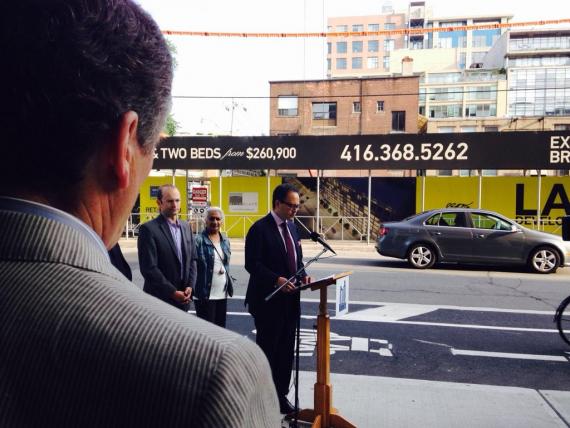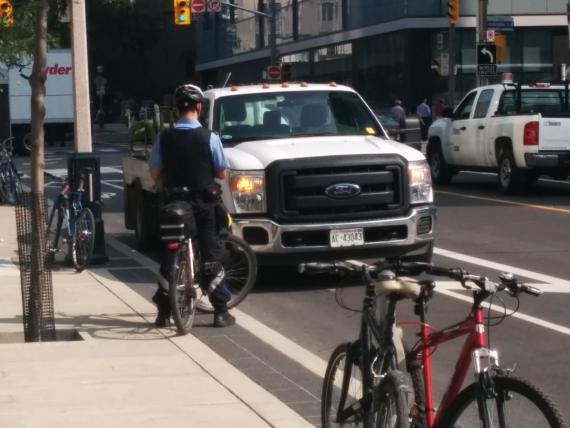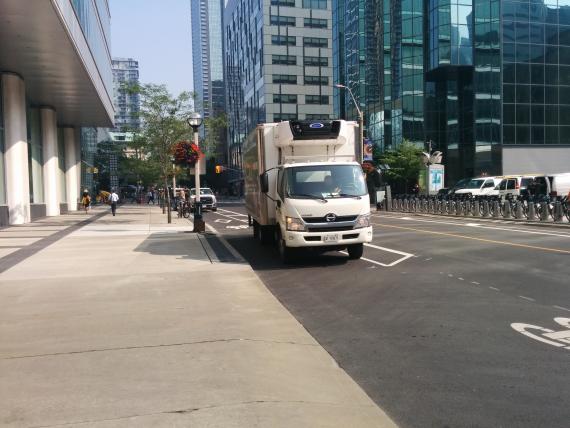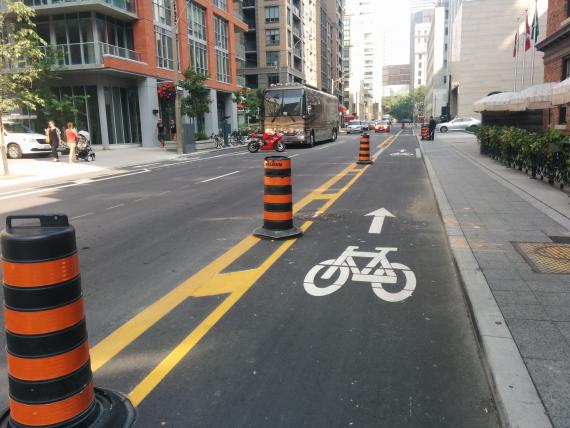Someone asked me last week why our Transportation Services chief, Stephen Buckley, doesn't want—or seems very reluctant—to install barriers on the Richmond and Adelaide "cycle tracks" (despite council voting for them 39-0 and despite Buckley signing up to NACTO's bike guide which defines cycle tracks as being physically separated). I replied that I don't know but I poked around and I think I have some clues.
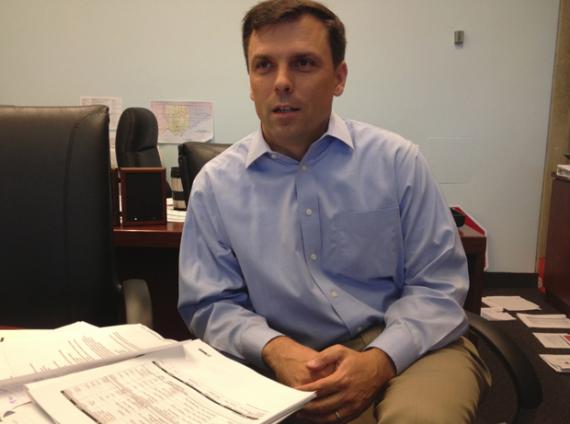
I present Stephen Buckley, General Manager of Transportation Services.
Buckley comes from Philadelphia, a city which has done the bare minimum for their sizable, passionate cycling population. Philadelphia has done little to address the problems with painted bike lanes and Buckley appears to be doing the same here.
Philadelphia is a large city with a city-wide average 2% bike mode share (compared to Toronto's city-wide average of 1.7%). This is high for a large American city, though it's more useful to compare the downtowns: Toronto's mode share jumps to around 10% while Philly's is a more modest 5%.
Under Buckley's watch Philadelphia installed pilot bike lanes on Spruce and Pine streets which were seen as major additions to the cycling network (and a major victory of the Bicycle Coalition of Greater Philadelphia). Yes, bike lanes are great news, but Buckley and the City took a very loose view to motor vehicles stopping in the bike lanes.
Going to church or synagogue? God's on your side if you park in the bike lane. Need to stop for a latte? Stop with Buckley's blessing:
Buckley said the city would make sure there is a "relaxed parking situation" for churches, since the bicycle lane will take up parking spaces.
Under the plan, strict no-parking regulations will be enforced on the bike lanes. But taxis and residents' vehicles will be allowed to stand briefly on the curb sides of Spruce and Pine. Horse-drawn carriages will be allowed to use the bike lanes, Buckley said.
And this is the result:
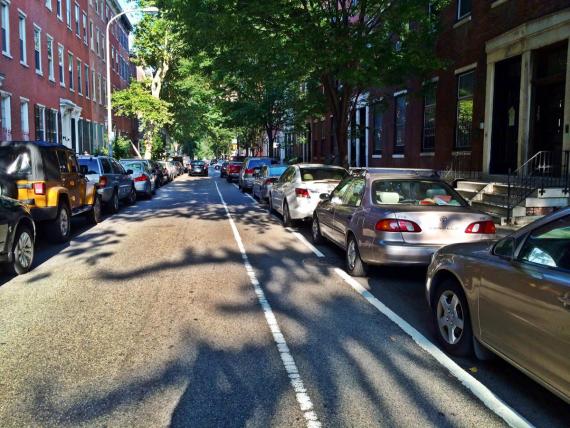
Pine Street bike lane used for godly parking (Source: this old city). Note that the actual bike lane is under the line of parked cars; what you see is just the buffer.
And it gets even worse. The bike lane is too inviting for jerks as a quick way to pass a long line of traffic.
https://www.youtube.com/watch?v=JzQIdnbJA6g
Source: this old city
And under Buckley's watch we've seen much the same with our completely permeable "cycle tracks":
Source: Ben Spur of Now Toronto who, in 45 minutes of walking the length of the Adelaide cycle track counted 27 vehicles in the cycle track, including 9 being driven in it.
(Ironic note: the Philly blogger posted a picture of a "bike lane" protected with planters in Toronto which turns out to be just the clusterfuck that is John Street.)
It's not surprising then that Buckley has carried this view over to Toronto. Buckley perhaps doesn't mind if cars end up stopped in the bike lane despite the fact that Toronto specifically created a new stricter by-law for cycle tracks that forbid all vehicles but emergency vehicles and utility trucks from stopping there.
You don't need barriers if you have no intention of preventing all vehicles from stopping in the bike lane. Buckley is working on improving enforcement, to his credit, but despite his naive quotes to the media he must surely know that it is quite impossible to promise a 100% car free bike lane with just a parking enforcement officer going back and forth.
The whole idea of a bike lane becomes untenable on really busy streets like Richmond and Adelaide where it doesn't matter if drivers are just stopped for a short time; multiply that by ten, twenty or thirty and the bike lane starts becoming completely useless as a safe commuter route.
And that's not even addressing the issue of couriers, cabs and tow trucks using the lanes constantly throughout the day. Enforcement won't work with them because these companies treat fines as just the cost of doing business. As Councillor Layton mentioned on Twitter: "earlier this term we doubled the cost of the ticket and made them so they could not be challenged in court. It still didn't deter."
Much the same happens in Philadelphia. A cyclist named Lucas described how a "stand briefly" policy becomes a solid line of parked cars:
I live on Pine, and when coming home tonight, I was forced out of the bike lane by a solid line of parked cars occupying it between about 19th and 16th (and not for the first time...). There are very clear signs posted saying "no parking at any time."
Enforcement didn't work in Phily, it's unclear how Buckley thinks it'll work in a city with a much busier downtown.
Buckley should be reminded that there is ample evidence that protected bike lanes (aka cycle tracks) make for safer cycling. And he should be reminded that it's not just about writing tickets to cars that stop in the bike lanes; the barriers on cycle tracks encourage more people to take up cycling. It's not just about abstract numbers that people are relatively safe, but that they feel safe enough that they'll leave their car at home and take up cycling. The vast majority of people will only take up cycling if they can bike on quiet side streets, bike trails or cycle tracks with barriers that separate them from motor traffic. Anything less is a failure in trying to bring more people to cycling.
It seems that Toronto was trying to slowly catch up to cities like Montreal and NYC with their expanding networks of protected bike lanes, but our Transportation chief seems content with emulating Philadelphia; a city with no protected bike lanes (this example is technically a river-side trail). That's not what I'd call having high ambitions of growing the cycling mode share here.

